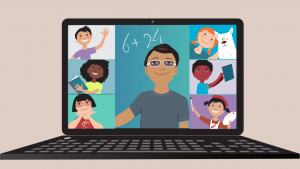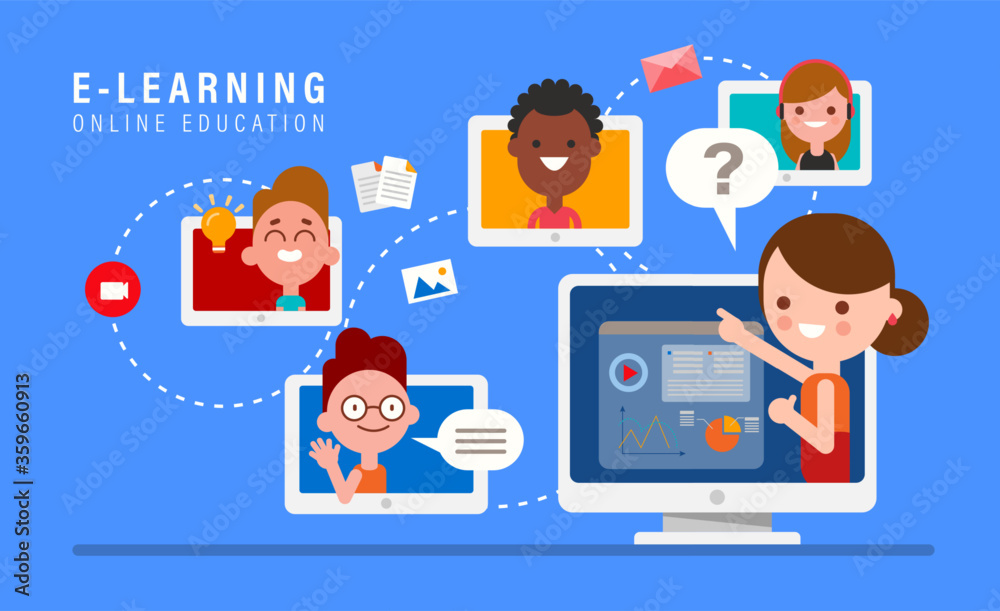Education and Study for Children and Kids: How to Construct Strong Study Routines
The Duty of E-Learning in Forming the Future of Education for Kids
As traditional education systems advance, the assimilation of e-learning is becoming a pivotal force in forming the future of education and learning for youngsters. With interactive platforms, customized discovering paths, and boosted accessibility, e-learning addresses varied educational demands while cultivating vital assuming skills. This digital transformation not just bridges geographical separates but likewise ensures fair accessibility to high quality education and learning, setting the stage for a much more comprehensive learning setting. Understanding the full extent of this effect needs analyzing the diverse implications of e-learning's role in modern-day education systems.
Interactive Learning Environments
In the realm of e-learning for children, interactive discovering settings have actually arised as pivotal tools in improving academic results. Education and study for children and kids. These electronic systems integrate multimedia components such as video clips, computer animations, and gamified exercises to develop a engaging and vibrant instructional experience. Notably, they transform passive learning right into an active process, consequently fostering far better retention and comprehension

The combination of collaborative devices additionally permits peer-to-peer interaction, which is essential for establishing social skills and teamwork capacities. Digital classrooms and discussion online forums allow students to share concepts, ask concerns, and team up on projects, replicating the advantages of standard classroom interactions. For that reason, interactive understanding environments are not just auxiliary academic tools however essential parts that enrich the learning ecosystem for children (Education and study for children and kids). Their duty in forming a much more interesting and reliable academic landscape can not be overstated.
Customized Education Paths
Utilizing the potential of customized education and learning courses transforms the learning experience for kids by catering to their one-of-a-kind requirements and capacities. E-learning systems, however, can utilize innovative algorithms and information analytics to customize educational web content, speed, and techniques to each youngster's specific requirements.
Customized education and learning paths likewise equip teachers by supplying thorough insights into trainee progression. Conversely, pupils standing out in particular subjects can progress without being held back by a standard educational program.
In addition, e-learning platforms can integrate varied understanding sources, such as interactive simulations, multimedia web content, and gamified lessons, to line up with different learning designs. By suiting visual, auditory, and kinesthetic students, customized education and learning courses guarantee that each child obtains the most efficient training approaches. Education and study for children and kids. Therefore, leveraging individualized education paths with e-learning is crucial in producing a future-proof, inclusive, and reliable academic landscape for children
Enhancing Access
While the advantages of customized education and learning paths are significant, enhancing accessibility is equally vital to ensure that e-learning systems can get browse around these guys to all children, irrespective of their socio-economic background or geographic area. Digital inclusion is vital to connect the instructional divide and provide fair learning opportunities. This can be attained through the advancement of low-priced, high-grade e-learning options that are obtainable on diverse tools, including smart devices, tablet computers, and computers.
Additionally, partnerships between governments, non-profits, and personal markets can promote the circulation of essential technology and internet access to underserved communities. Such partnerships can additionally sustain the development of localized material in numerous languages, making certain cultural significance and understanding.
Furthermore, flexible understanding technologies can be customized to fit children with handicaps, giving functions like text-to-speech, flexible message sizes, and interactive components that cater to different understanding requirements. These innovations not only equalize education and learning yet also empower learners by providing tools that satisfy private obstacles.
Developing Vital Abilities
With ease of access improvements in area, the following necessary element to address is the development of crucial skills amongst young learners. E-learning systems offer an one-of-a-kind opportunity to grow a variety of crucial skills that standard classroom setups may have a hard time to deal with thoroughly. Amongst these are crucial reasoning, analytical, and digital proficiency, which are progressively essential in the modern world.

Furthermore, e-learning systems frequently integrate collaborative tools like conversation online forums, group projects, and peer evaluations, which promote communication and team effort skills. These platforms likewise reveal pupils to a large selection of digital tools and resources, improving their digital literacy. As trainees navigate different software application, applications, and on the internet sources, they come to be proficient at using innovation properly and sensibly.
Fundamentally, e-learning not just supplements conventional education yet also furnishes students with the vital abilities necessary to prosper in an interconnected and increasingly electronic world.
Overcoming Geographical Barriers
The development of e-learning has actually significantly mitigated the geographical barriers that typically prevented access to top quality education and learning. Prior to the digital transformation, trainees in remote or impoverished locations frequently dealt with limited academic sources and opportunities. E-learning platforms currently bridge this gap, giving global access to premium instructional content no matter area.
Via on-line classes, online collections, and interactive tools, students from diverse geographical histories can involve with the same educational program provided in municipal schools. This democratization of education and learning makes sure that every youngster, irrespective of their physical area, has the potential to achieve academic success. E-learning promotes accessibility to specific subjects and skilled instructors that may not be offered locally.
In addition, e-learning allows real-time partnership in between students and teachers from various components of the globe, fostering an international learning area. This interconnectedness not only enhances pupils' instructional see experiences yet also prepares them for an extra globalized labor force. By getting over geographical restrictions, e-learning is crucial in developing an inclusive instructional setting where every kid has the chance to thrive. The function of e-learning expands past mere convenience; it is a transformative device that redefines accessibility in education and learning.
Conclusion
E-learning is pivotal in forming the future of education and learning for youngsters by developing individualized and interactive understanding settings. E-learning, for that reason, stands as a keystone in the development of modern-day education.
As traditional education and learning systems develop, the combination of e-learning is arising as a crucial force in shaping the future of education for children. Thus, leveraging tailored education courses with e-learning is critical in producing a future-proof, inclusive, and efficient educational landscape more helpful hints for youngsters.
While the benefits of individualized education paths are considerable, improving access is similarly essential to guarantee that e-learning systems can get to all youngsters, regardless of their socio-economic background or geographic area. The function of e-learning prolongs beyond simple benefit; it is a transformative device that redefines ease of access in education.
E-learning is essential in shaping the future of education for youngsters by producing tailored and interactive discovering settings.